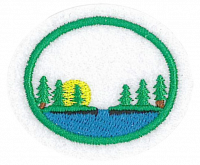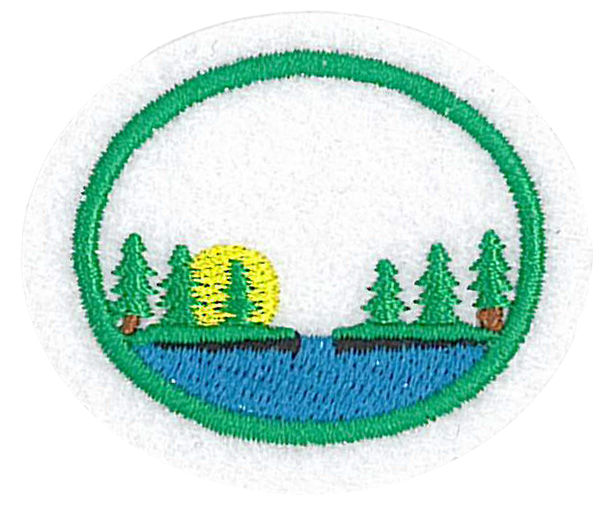Difference between revisions of "AY Honors/Bogs & Fens/Answer Key/es"
From Pathfinder Wiki
< AY Honors | Bogs & FensAY Honors/Bogs & Fens/Answer Key/es
(Created page with "{{clear}}") |
|||
| (16 intermediate revisions by the same user not shown) | |||
| Line 30: | Line 30: | ||
{{CloseReq}} <!-- 4 --> | {{CloseReq}} <!-- 4 --> | ||
{{ansreq|page={{#titleparts:{{PAGENAME}}|2|1}}|num=5}} | {{ansreq|page={{#titleparts:{{PAGENAME}}|2|1}}|num=5}} | ||
| − | <noinclude> | + | <noinclude></noinclude> |
| − | </noinclude> | + | <!-- 5. ¿Cuál es la diferencia entre un pantano y una ciénaga? ¿Qué es la sucesión ecológica y cómo los pantanos y las ciénagas ilustran este proceso? --> |
| − | <!-- 5. | ||
| − | |||
| − | |||
| − | |||
| − | |||
| − | |||
| − | |||
{{clear}} | {{clear}} | ||
| Line 45: | Line 38: | ||
{{CloseReq}} <!-- 5 --> | {{CloseReq}} <!-- 5 --> | ||
{{ansreq|page={{#titleparts:{{PAGENAME}}|2|1}}|num=6}} | {{ansreq|page={{#titleparts:{{PAGENAME}}|2|1}}|num=6}} | ||
| − | <noinclude> | + | <noinclude></noinclude> |
| − | </noinclude> | + | <!-- 6. ¿Cuáles son algunas adaptaciones de las plantas de pantanos? --> |
| − | <!-- 6 | ||
| − | |||
| − | |||
| − | |||
| − | |||
| − | |||
| Line 58: | Line 45: | ||
{{CloseReq}} <!-- 6 --> | {{CloseReq}} <!-- 6 --> | ||
{{ansreq|page={{#titleparts:{{PAGENAME}}|2|1}}|num=7}} | {{ansreq|page={{#titleparts:{{PAGENAME}}|2|1}}|num=7}} | ||
| − | <noinclude> | + | <noinclude></noinclude> |
| − | </noinclude> | + | <!-- 7. ¿Qué es musgo de turbera y cómo es necesario para los pantanos? --> |
| − | <!-- 7. | ||
| − | |||
| − | |||
| − | |||
<noinclude></noinclude> | <noinclude></noinclude> | ||
{{CloseReq}} <!-- 7 --> | {{CloseReq}} <!-- 7 --> | ||
{{ansreq|page={{#titleparts:{{PAGENAME}}|2|1}}|num=8}} | {{ansreq|page={{#titleparts:{{PAGENAME}}|2|1}}|num=8}} | ||
| − | <noinclude> | + | <noinclude></noinclude> |
| − | </noinclude> | + | <!-- 8. ¿Qué son las plantas carnívoras y qué las hace específicas a los pantanos? Nombrar y describir por lo menos dos de ellas. --> |
| − | <!-- 8. | ||
| − | |||
| − | |||
| − | |||
| − | |||
| − | |||
| − | |||
{{clear}} | {{clear}} | ||
| Line 85: | Line 61: | ||
{{CloseReq}} <!-- 8 --> | {{CloseReq}} <!-- 8 --> | ||
{{ansreq|page={{#titleparts:{{PAGENAME}}|2|1}}|num=9}} | {{ansreq|page={{#titleparts:{{PAGENAME}}|2|1}}|num=9}} | ||
| − | <noinclude> | + | <noinclude></noinclude> |
| − | </noinclude> | + | <!-- 9. Nombrar y describir cinco otras plantas o árboles que se encuentran en los pantanos. --> |
| − | <!-- 9. | + | {{:AY Honors/Species Account/Larix laricina/es}} |
| − | {{: | ||
| − | |||
{{clear}} | {{clear}} | ||
| Line 104: | Line 78: | ||
{{CloseReq}} <!-- 9 --> | {{CloseReq}} <!-- 9 --> | ||
{{ansreq|page={{#titleparts:{{PAGENAME}}|2|1}}|num=10}} | {{ansreq|page={{#titleparts:{{PAGENAME}}|2|1}}|num=10}} | ||
| − | <noinclude> | + | <noinclude></noinclude> |
| − | </noinclude> | + | <!-- 10. Nombrar y describir cinco animales que se pueden encontrar en pantanos y ciénagas. --> |
| − | <!-- 10. | ||
| − | |||
{{clear}} | {{clear}} | ||
| Line 115: | Line 87: | ||
{{clear}} | {{clear}} | ||
| − | + | {{clear}} | |
| − | {{ | ||
| − | |||
| − | |||
| − | |||
{{clear}} | {{clear}} | ||
| Line 126: | Line 94: | ||
{{CloseReq}} <!-- 10 --> | {{CloseReq}} <!-- 10 --> | ||
{{ansreq|page={{#titleparts:{{PAGENAME}}|2|1}}|num=11}} | {{ansreq|page={{#titleparts:{{PAGENAME}}|2|1}}|num=11}} | ||
| − | <noinclude> | + | <noinclude></noinclude> |
| − | </noinclude> | + | <!-- 11. Contar una historia acerca de los pantanos y extraer una lección espiritual. --> |
| − | <!-- 11. | ||
| − | |||
| − | |||
{{clear}} | {{clear}} | ||
| Line 137: | Line 102: | ||
{{CloseReq}} <!-- 11 --> | {{CloseReq}} <!-- 11 --> | ||
{{ansreq|page={{#titleparts:{{PAGENAME}}|2|1}}|num=12}} | {{ansreq|page={{#titleparts:{{PAGENAME}}|2|1}}|num=12}} | ||
| − | <noinclude> | + | <noinclude></noinclude> |
| − | </noinclude> | + | <!-- 12. Hacer al menos dos de las siguientes actividades: --> |
| − | <!-- 12. | ||
| − | |||
<noinclude></noinclude> | <noinclude></noinclude> | ||
| Line 146: | Line 109: | ||
<noinclude></noinclude> | <noinclude></noinclude> | ||
| − | + | <noinclude></noinclude> | |
| − | <noinclude | ||
| − | |||
{{CloseReq}} <!-- 12a --> | {{CloseReq}} <!-- 12a --> | ||
{{ansreq|page={{#titleparts:{{PAGENAME}}|2|1}}|num=12b}} | {{ansreq|page={{#titleparts:{{PAGENAME}}|2|1}}|num=12b}} | ||
| − | <noinclude> | + | <noinclude></noinclude> |
| − | </noinclude> | ||
| − | |||
{{AY Honors/Zoo Visit}} | {{AY Honors/Zoo Visit}} | ||
| − | |||
| − | + | <noinclude></noinclude> | |
| − | <noinclude | ||
| − | |||
{{CloseReq}} <!-- 12b --> | {{CloseReq}} <!-- 12b --> | ||
{{ansreq|page={{#titleparts:{{PAGENAME}}|2|1}}|num=12c}} <!--T:28--> | {{ansreq|page={{#titleparts:{{PAGENAME}}|2|1}}|num=12c}} <!--T:28--> | ||
| − | <noinclude> | + | <noinclude></noinclude> |
| − | </noinclude | ||
| − | |||
| − | |||
| − | |||
| − | |||
| − | |||
{{clear}} | {{clear}} | ||
| − | |||
| − | + | {{clear}} | |
| − | |||
| − | |||
| − | |||
| − | + | <noinclude></noinclude> | |
| − | <noinclude | ||
| − | |||
{{CloseReq}} <!-- 12c --> | {{CloseReq}} <!-- 12c --> | ||
{{ansreq|page={{#titleparts:{{PAGENAME}}|2|1}}|num=12d}} <!--T:31--> | {{ansreq|page={{#titleparts:{{PAGENAME}}|2|1}}|num=12d}} <!--T:31--> | ||
| − | <noinclude> | + | <noinclude></noinclude> |
| − | </noinclude | ||
| − | |||
| − | |||
| − | + | <noinclude></noinclude> | |
| − | <noinclude | ||
| − | |||
{{CloseReq}} <!-- 12d --> | {{CloseReq}} <!-- 12d --> | ||
{{ansreq|page={{#titleparts:{{PAGENAME}}|2|1}}|num=12e}} <!--T:32--> | {{ansreq|page={{#titleparts:{{PAGENAME}}|2|1}}|num=12e}} <!--T:32--> | ||
| − | <noinclude> | + | <noinclude></noinclude> |
| − | </noinclude | ||
| − | |||
| − | |||
| − | |||
| − | + | <noinclude></noinclude> | |
| − | <noinclude | ||
| − | |||
{{CloseReq}} <!-- 12e --> | {{CloseReq}} <!-- 12e --> | ||
{{CloseReq}} <!-- 12 --> | {{CloseReq}} <!-- 12 --> | ||
| − | <noinclude> | + | <noinclude></noinclude> |
| − | </noinclude> | + | ==Referencias== |
| − | == | + | <noinclude></noinclude> |
| − | |||
| − | |||
| − | |||
| − | |||
| − | |||
| − | |||
| − | |||
| − | |||
| − | |||
| − | |||
| − | |||
| − | |||
| − | |||
| − | |||
| − | |||
| − | <noinclude | ||
| − | |||
{{CloseHonorPage}} | {{CloseHonorPage}} | ||
Latest revision as of 21:57, 14 July 2022
Pantanos y ciénagas
Nivel de destreza
2
Año
2014
Version
28.11.2025
Autoridad de aprobación
Asociación General
1
¿Qué es un pantano? ¿Cómo es único?
2
¿Dónde se encuentran los pantanos?
3
Nombrar seis cosas que son necesarias para la formación de los pantanos.
4
Nombrar y describir tres diferentes tipos de pantanos verdaderos.
5
¿Cuál es la diferencia entre un pantano y una ciénaga? ¿Qué es la sucesión ecológica y cómo los pantanos y las ciénagas ilustran este proceso?
6
¿Cuáles son algunas adaptaciones de las plantas de pantanos?
7
¿Qué es musgo de turbera y cómo es necesario para los pantanos?
8
¿Qué son las plantas carnívoras y qué las hace específicas a los pantanos? Nombrar y describir por lo menos dos de ellas.
9
Nombrar y describir cinco otras plantas o árboles que se encuentran en los pantanos.
10
Nombrar y describir cinco animales que se pueden encontrar en pantanos y ciénagas.
11
Contar una historia acerca de los pantanos y extraer una lección espiritual.
12
Hacer al menos dos de las siguientes actividades:
12a
Visitar una exhibición o conservatorio de plantas de humedales, específicamente musgos (de la variedad de Sphagnum si es posible) y plantas carnívoras. Buscar cómo se han adaptado a vivir en suelo pobre, bajas temperaturas y la falta de nutrientes.
12b
Visitar un zoológico donde hay animales de humedales. Si es posible, observar algunos de los que estudió al aprender acerca de los pantanos.
Si piensa visitar un zoológico o acuario, tenga en cuenta que hay varias especialidades que tienen requisitos que se pueden cumplir visitando un zoológico o acuario. Los individuos pueden trabajar en varias especialidades en una visita, o partes de su grupo pueden trabajar en diferentes especialidades durante la misma visita.
Aquí hay una lista de especialidades que tienen requisitos que se pueden cumplir visitando un zoológico o acuario:
Bosques templados caducifolios
Especies en peligro de extinción
12c
Ver un DVD o video acerca de pantanos, o plantas o animales que viven en pantanos.
12d
Dibujar o pintar una imagen de algo en que se ha divertido aprendiendo al estudiar acerca de los pantanos.
12e
Hablar con su grupo, escribir acerca de o hacer un video breve acerca de un proyecto real de conservación de un pantano. Explicar por qué este hábitat específico debe ser conservado, es decir, las especies en peligro de extinción de plantas y/o animales que viven allí.


